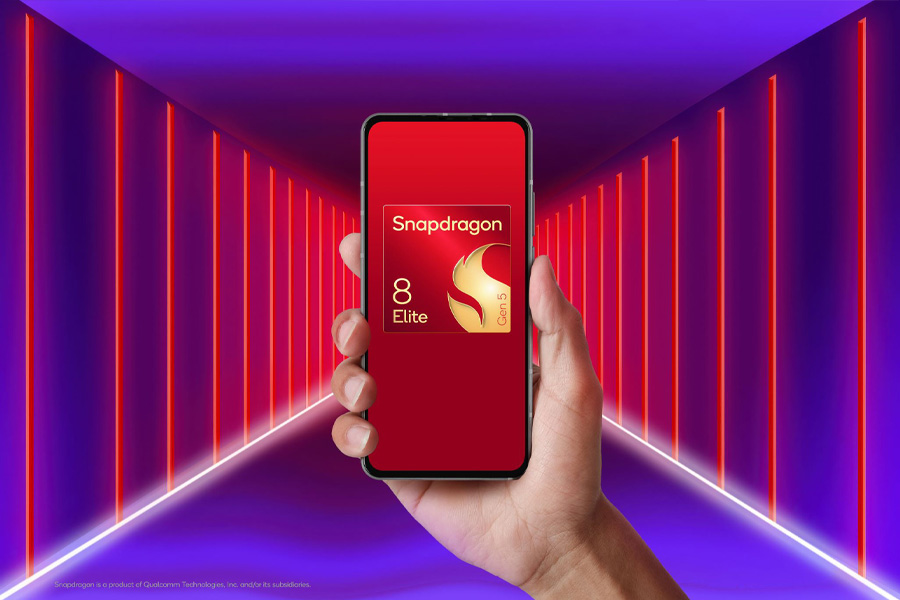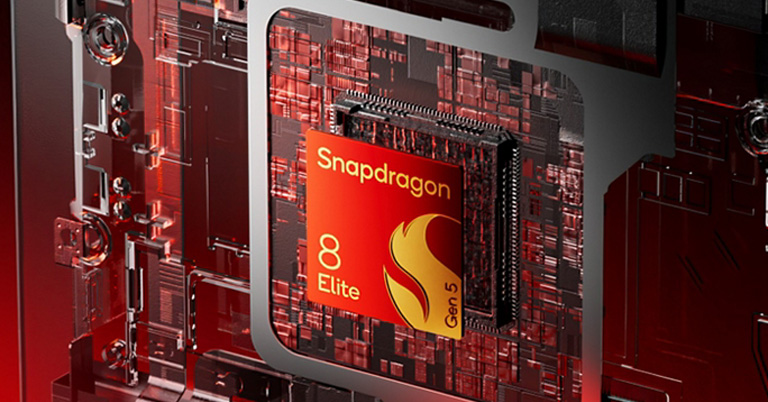No headings found
Qualcomm just dropped the Snapdragon 8 Elite Gen 5, and it's more powerful than ever. The chip promises up to 23% better performance than its predecessor and brings the world's first mobile APV codec support for professional video recording. Now, let's jump in this article, where I will discuss everything about the latest Snapdragon 8 Elite Gen 5, including its rumored price in Nepal, specifications, and availability.
Snapdragon 8 Elite Gen 5 Overview
Why the Gen 5 Naming?
The whole naming thing is kinda funny though. Qualcomm skipped straight to "Gen 5" because they're counting from the original Snapdragon 8 series that began in 2021. Here's how it breaks down: Snapdragon 8 Gen 1 in 2021, followed by the 8 Gen 2 in 2022, then the 8 Gen 3 in 2023, and last year's Snapdragon 8 Elite which would have been the 8 Gen 4. So this new chip is technically the fifth in the series.
According to Qualcomm, the Snapdragon 8 Elite Gen 5 represents "an evolution of its established framework" rather than a complete architectural change. They're keeping the Elite branding while continuing the generational numbering from where they left off.
Performance and Processing Power

At its core is TSMC's N3P 3nm manufacturing process, pushing clock speeds up to 4.65GHz on the prime cores. We're talking about a 2+6 core configuration with two Prime cores running at 4.6GHz and six Performance cores at 3.62GHz. The whole setup delivers a 20% improvement in CPU performance, 35% better efficiency, and 16% overall power savings across the entire processor.
The benchmark numbers are pretty wild as well. AnTuTu scores are hitting between 4.2 million and 4.4 million points, which is record-breaking territory for mobile chips. Single-core performance jumps by 20%, multi-core gets a 17% boost, and web browsing is 32% faster. The previous Snapdragon 8 Elite topped out at 4.32GHz (4.47GHz for Galaxy phones), so this new chip is edging closer to that 5GHz barrier everyone's been talking about.
The CPU also packs hardware-based AI acceleration with Arm's SME extension support. This isn't replacing the NPU, but it'll handle smaller AI models that aren't optimized for dedicated AI silicon. When AI workloads can't use the NPU, they usually fall back to the GPU or CPU.
Gaming Performance and Graphics
According to recent tests, gaming performance is where this chip really shines. BGMI runs at 120FPS in Original Frame Rate Mode and can push up to 144FPS in Hyper Frame Rate Mode. CODM hits a smooth 144FPS, while Genshin Impact manages 60FPS consistently. Mobile gaming gets a huge boost with the new Adreno GPU, with a 23% performance increase and 20% lower power consumption.
The GPU runs at 1.2GHz (up from 1.1GHz on the previous gen) and introduces Adreno High Performance Memory with 18MB of dedicated cache for game developers. This should deliver up to 10% power savings during gaming. Qualcomm's working directly with developers like miHoYo, NetEase, and Tencent to optimize games for this new cache system. You're also getting full Unreal Engine 5 compatibility with Nanite and Lumen support, plus mesh shading technology as well.
AI Processing and Agentic Features
The next-generation Hexagon NPU is 37% faster than the previous chip and delivers 16% better performance per watt. It includes added AI accelerators specifically for running large language models locally on your phone. The big addition is INT2 precision support, which allows for higher compression of AI models. This means some AI models that were too large for phones might actually run on-device now.
The Qualcomm Personal Scribe and personal knowledge graph sound pretty interesting. These features can make recommendations and act on your behalf based on your routines, preferences, and conversations. It taps into the Sensing Hub for always-on, low-power processing, handling audio, presence-sensing, and contextual understanding for multimodal AI assistants.
Camera and Video Capabilities
You're getting the world's first mobile chipset with Advanced Professional Video codec support. Samsung's been pushing APV as their prosumer video format, claiming "perceptually lossless" video quality back in 2023. Qualcomm says this lets you capture near-lossless video while making adjustments in post-production like highlights, shadows, and precise color grading.
Snapdragon 8 Elite Gen 5 is the world’s first mobile platform with APV codec support. The APV codec records high-bitrate, pro-grade video similar to ProRes on iPhone or RAW on professional cameras. Such codecs are used for advanced editing, colour grading, and VFX without quality loss. The APV also offers a fully computational video pipeline. Each frame is individually extracted and preserved with still-image quality.The camera setup supports up to 320MP sensors for snapshots, with standard configurations handling 48MP triple cameras or 108MP single cameras. The triple 20-bit Spectra AI ISP is upgraded from 18-bit, delivering a claimed 4x increase in dynamic range. Video recording goes up to 4K at 120fps, 8K playback at 60fps, and 1080p slow-motion at 480fps.
Dragon Fusion technology, developed with computational imaging specialists Arcsoft, gives devices a "fully computational" video pipeline. Every video frame gets treated like a photo with advanced AI tone mapping, improved colors, shadows, and highlights.
Audio Recording Innovation
Snapdragon Audio Sense is Qualcomm's answer to professional audio recording. It promises pro-level audio capture in any environment with wind noise rejection, audio zoom, and HDR audio recording. The company claims this tech will eliminate the need for additional shotgun or lavalier microphones, though it requires devices with piezo-electric MEMs microphones.
- Also, read
- Redmi Pad 2 Pro launched with 12.1-inch display and Snapdragon 7s Gen 4
- UFS 5.0 announced with almost twice as fast data speeds!
- Xiaomi 17 Pro Max teaser confirms a new design, and completely skips the 16 series
Connectivity and Modem Upgrades
The Qualcomm X85 modem bumps download speeds to 12.5Gbps (up from 10Gbps) and upload speeds to 3.7Gbps (up from 3Gbps). The modem is more efficient and offers enhanced location accuracy compared to the previous generation.
You're still getting the FastConnect 7900 connectivity suite with Wi-Fi 7 support across 6GHz, 5GHz, and 2.4GHz bands, Bluetooth 6.0, and UWB on a single chip. The connectivity improvements include up to 40% power savings and up to 50% lower gaming latency thanks to AI-enhanced Wi-Fi optimization.
Snapdragon 8 Elite Gen 5 Specifications
- Processor: Third-generation Oryon CPU, 2+6 cores (2x 4.65GHz + 6x 3.62GHz), TSMC N3P 3nm
- Graphics: Adreno GPU at 1.2GHz with 18MB cache, 23% performance boost, Unreal Engine 5 support
- AI Engine: Hexagon NPU, 37% faster, INT2/INT4 precision, Personal Scribe, LLM accelerators
- Memory: LPDDR5x RAM, UFS 4.1 storage
- Camera ISP: Triple 20-bit Spectra ISP, up to 320MP, Dragon Fusion pipeline
- Video: 4K/120fps, 8K/60fps, APV codec support, 1080p/480fps slow-motion
- Audio: Snapdragon Audio Sense with wind rejection, audio zoom, HDR recording
- 5G Modem: X85 modem, 12.5Gbps down, 3.7Gbps up
- Connectivity: Wi-Fi 7, Bluetooth 6.0, UWB, 40% power savings
- Navigation: GPS/GLONASS/Galileo/Beidou/QZSS/NavIC, sidewalk-level accuracy
- Display: Quad HD+, 240Hz, 10-bit color
- Charging: Quick Charge 5, USB-C
Snapdragon 8 Elite Gen 5 Availability in Nepal
The chipset will power flagship phones launching this month, with Xiaomi 17 series being the first. If launched in Nepal, it is expected to start at no less than NPR 190,000, based on current flagship pricing trends for ultra-premium models like the Galaxy S26 Ultra.
- Meanwhile, check out our review of the Pixel 10
Article Last updated: September 25, 2025






